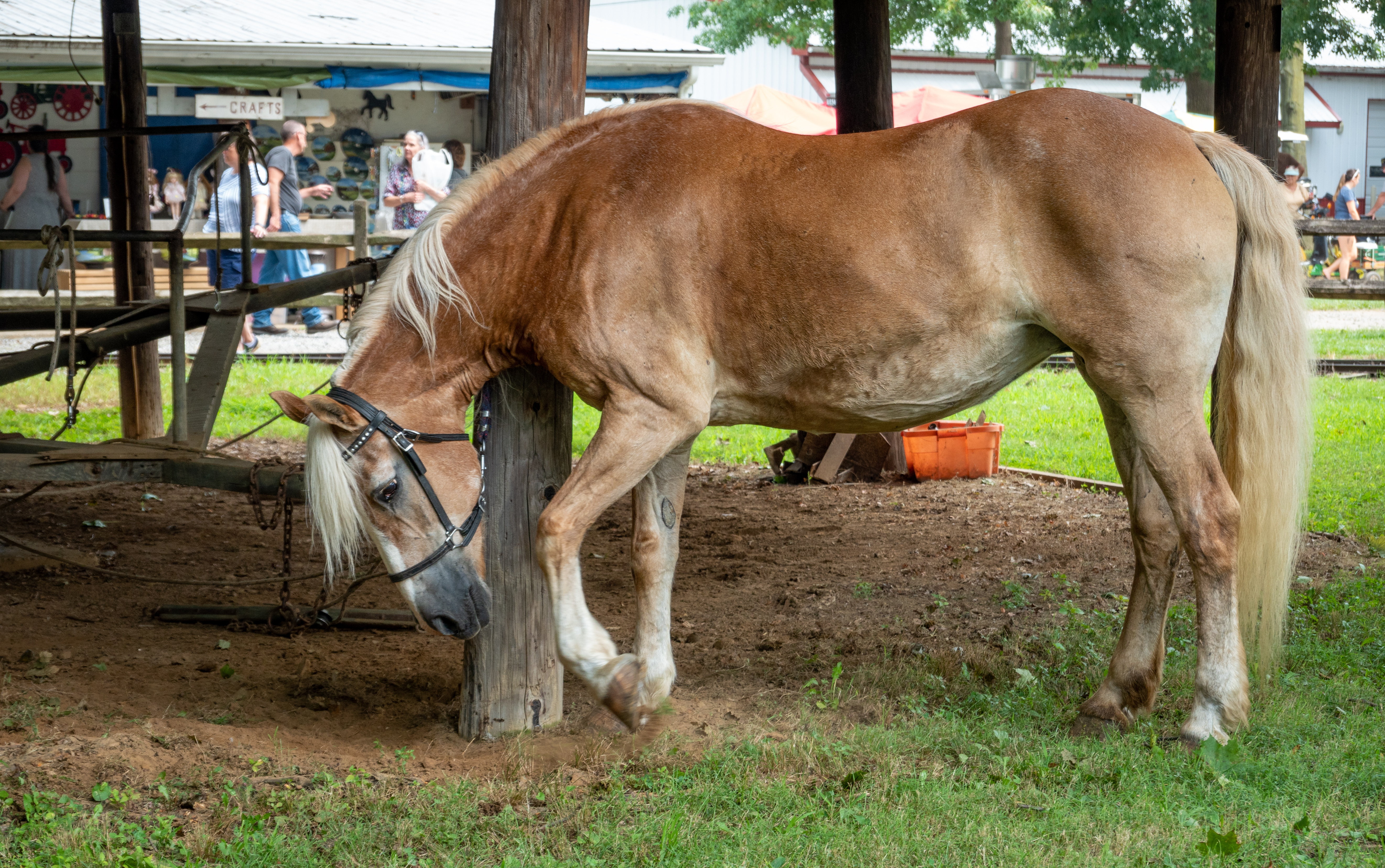Surprising findings about pawing
- May 15, 2024
- ⎯ Equus
A study challenges many long-held assumptions about pawing, suggesting the behavior has less to do with boredom than with discomfort associated with exertion.
The Cornell University study was based on 41 Standardbred racehorses. “We used Standardbreds because pawing was the only behavior about which their trainers complained,” says Katherine Houpt, VMD, PhD. The horses were stabled at the New York State Fairgrounds while in training and kept in box stalls with dirt floors. They were exercised for 30 minutes daily, Monday through Saturday.

The researchers observed the horses for brief periods twice daily for 62 days, at 7:30 a.m. and at 4:00 p.m. Each horse’s activities were then documented using several behavior categories including pawing, weaving, drinking, lying [in sternal position or flat] or standing. Overall, 58.5 percent of the study horses were seen pawing at least once, and within that group, pawing accounted for nearly 9 percent of all observed behavior.
Analysis of the collected data suggested that neither age nor gender influenced a horse’s likelihood to paw. But the researchers discovered an unexpected pattern: Horses were more likely to paw in the afternoon, after they had been exercised, and they were less inclined to engage in the behavior on Sundays, when they were not exercised at all. “Pawing is typically associated with boredom and lack of activity, so this finding was surprising,” says Houpt.
What’s more, pawing was most common during the afternoon behavior check, which was made two hours before mealtime. This, says Houpt, suggests that the horses were not pawing because they were anticipating feeding time.
These factors, says Houpt, “led us to think this was comfort-seeking behavior.” The researchers hypothesize that post-workout soreness may help explain the increase in pawing during the afternoons. They also speculate that the horses may paw to create holes in the floor where they can place their feet to redistribute weight or to compensate for uneven floors.
In their paper, the researchers note that “many anecdotal observations of the horses showing pawing behavior seemed to support this hypothesis,” and Houpt adds that “the trainers don’t call the behavior ‘pawing.’ They call it ‘digging,’ so they must think it is a goal-directed behavior.”Houpt says that a study involving time-lapse video to record the location of holes and whether horses do stand in them would be helpful in proving this hypothesis. “Now all we need is a few hundred Standardbreds and an eager team of students so we can answer these questions.”
Reference: “Pawing by Standardbred racehorses: frequency and patterns,” Journal of Equine Science, October 2014
This article first appeared in EQUUS issue #449
Don’t miss out! With the free weekly EQUUS newsletter, you’ll get the latest horse health information delivered right to your in basket! If you’re not already receiving the EQUUS newsletter, click here to sign up. It’s *free*!








